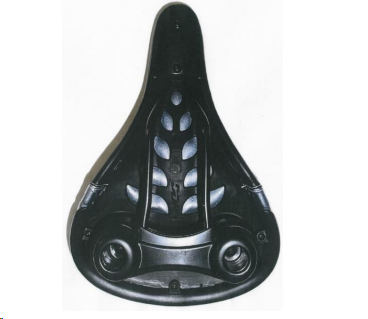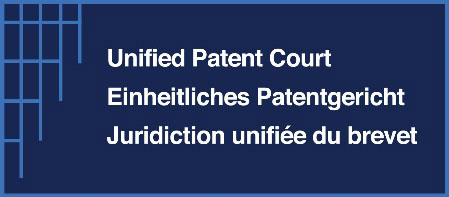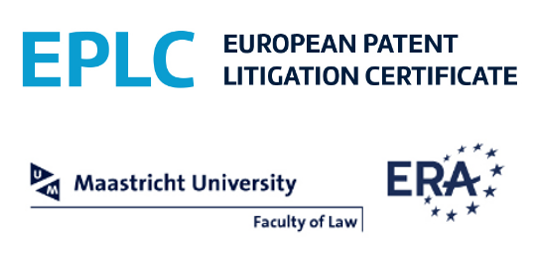Design Law
Print this page2024
IPPT20240227, CJEU, EUIPO v KaiKai
Neither Article 41 Community Designs Regulation nor Article 4 of the Paris Convention provides for a 12-month period for design priority rights. Art. 4 of the Paris Convention has no direct effect in the European Union. The right of priority for filing a Community design application is governed by Article 41 of Community Designs Regulation. General Court erred in law by directly applying Article 41(1) Community Designs Regulation to right of priority based on patent. Article 41 Community Designs Regulation does not permit an application for registration of a patent to form the basis of a right of priority for a subsequent application for registration of a Community design. Time limit for claiming a right of priority is six months, as expressly stated in Art 41 Community Designs Regulation. Under Article 4 Paris Convention, a claim of priority for a design application cannot be made on the basis of an earlier patent application. It follows from a common reading of Sections A and C of Article 4 that the subsequent application must relate to "the same subject matter" as the earlier application which forms the basis for the right of priority. The claimed right of priority is more than six months before the application and rightly denied, judgment under appeal set aside.
IPPT20240124, GCEU, LEGO v Delta Sport
The General Court upholds the validity of the protection of a Lego toy brick. Open configuration options. The General Court finds, on the basis of its case-law and adding to it, that a design is declared invalid only in the case where all its characteristics are excluded from protection. In this case, since some of the arguments made by Delta Sport Handelskontor concern only one of the characteristics amongst several upheld by EUIPO, those arguments must be held to be ineffective and, for that reason, dismissed. The General Court also finds that Delta Sport Handelskontor, which bears the burden of proof in this context, had not provided evidence capable of demonstrating that the design of the Lego toy brick does not meet certain conditions required in order to benefit from the exception protecting modular systems, namely novelty and individual character.
2023
IPPT20230216, CJEU, Monz v Büchel
 Visibility of a design (underside of a saddle) which constitutes a component part of a complex product (bicycle) during normal of use of that complex product (article 3 Design-directive). The requirement of ‘visibility’ must be assessed in the light of a situation of normal use of that complex product, so that the component part concerned, once it has been incorporated into that product, remains visible during such use. To that end, the visibility of a component part of a complex product during its ‘normal use’ by the end user must be assessed from the perspective of that user as well as from the perspective of an external observer, and that normal use must cover acts performed during the principal use of a complex product as well as acts which must customarily be carried out by the end user in connection with such use, with the exception of maintenance, servicing and repair work.
Visibility of a design (underside of a saddle) which constitutes a component part of a complex product (bicycle) during normal of use of that complex product (article 3 Design-directive). The requirement of ‘visibility’ must be assessed in the light of a situation of normal use of that complex product, so that the component part concerned, once it has been incorporated into that product, remains visible during such use. To that end, the visibility of a component part of a complex product during its ‘normal use’ by the end user must be assessed from the perspective of that user as well as from the perspective of an external observer, and that normal use must cover acts performed during the principal use of a complex product as well as acts which must customarily be carried out by the end user in connection with such use, with the exception of maintenance, servicing and repair work.
IPPT20230202, CJEU, Papierfabriek Doetinchem v Sprick
Technical function – allowing a multicolour appearance – can only be taken into account if it is apparent from the registration of the design. The assessment as to whether the features of appearance of a product are dictated solely by its technical function, within the meaning of that provision, must be made having regard to all of the objective circumstances relevant to each case, inter alia (i) those dictating the choice of features of appearance, (ii) the existence of alternative designs which fulfil the same technical function, and (iii) the fact that the proprietor of the design in question also holds design rights for numerous alternative designs, although that latter fact is not decisive for the application of that provision.
2022
IPPT20220303, CJEU, Acacia v BMW
Community court of Member State where (threatened) infringement takes place by offering for sale and delivery in advertising (not cross-border) competent (Article 82(5) CD-Regulation): such acts may be the subject of an action for infringement which targets, in accordance with Article 82(5) of Regulation No 6/2002, a single Member State. The fact that the defendant took decisions and steps in another Member State to bring about those acts does not preclude such an action from being brought (see, by analogy, judgment of 5 September 2019, AMS Neve and Others, C‑172/18, EU:C:2019:674, paragraph 65). Applicable law ancillary claims: law of Member State where (threatened) infringement occurs ("lex loci delicti") applicable to claims for destruction of infringing products ("other appropriate sanction", Article 89(1)(5) CD-Regulation). Law of that Member State applicable to claims for compensation and for the provision of (accounting) information and documents ("lex fori")("matters not regulated by the Regulation", Article 88(2) CD-Regulation). If (imminent) infringement takes place on the territory of one Member State, the law of that Member State shall be the law applicable in accordance with Article 8(2) Rome II.
2021
IPPT20211028, CJEU, Ferrari v Mansory Making available to the public of a design consisting of a part of a (complex) product (article 3(a) CDR, article 4(2) CDR, article 6(1) CDR, article 11 CDR) The making available to the public of images of a product (such as the publication of photographs of a car) entails the making available to the public of a design, consisting of (a) part of that product or of (b) a component part of that product, as a complex product, provided that the appearance of that part or component part is clearly identifiable at the time the design is made available. In order for it to be possible to examine whether that appearance satisfies the condition of individual character (article 6(1) CDR), it is necessary that the part or component part in question constitute a visible section of the product or complex product, clearly defined by particular lines, contours, colours, shapes or texture.
Making available to the public of a design consisting of a part of a (complex) product (article 3(a) CDR, article 4(2) CDR, article 6(1) CDR, article 11 CDR) The making available to the public of images of a product (such as the publication of photographs of a car) entails the making available to the public of a design, consisting of (a) part of that product or of (b) a component part of that product, as a complex product, provided that the appearance of that part or component part is clearly identifiable at the time the design is made available. In order for it to be possible to examine whether that appearance satisfies the condition of individual character (article 6(1) CDR), it is necessary that the part or component part in question constitute a visible section of the product or complex product, clearly defined by particular lines, contours, colours, shapes or texture.
2019
IPPT20191121, CJEU, Spin Master
Article 90(1) of the Community Designs Regulation provides that the courts of the Member States which have jurisdiction to order provisional or protective measures in respect of a national design shall also have jurisdiction to order such measures in respect of a Community design: use of the word 'including' confirms that it does not necessarily have to be a specialised court; legislator has made requirements of proximity and efficiency prevail over the objective of specialization.
IPPT20190912, CJEU, Cofemel v G-Star Raw
Copyright protection may not be granted to designs on the sole ground that, over and above their practical purpose, they produce a specific aesthetic effect: designs must constitute the expression of original works if they are to qualify for such protection.
2018
IPPT20180705, CJEU, Jägermeister v EUIPO
Article 36(1)(c) of the Community Designs Regulation requires the representation of a design for which registration is sought to clearly identify that design.
IPPT20180308, CJEU, Doceram v CeramTec
In order to ascertain whether the features of appearance of a product are solely dictated by its function, it must be established that the function is the only factor which dictated those characteristics: the existence of alternative designs isn’t decisive. In order to ascertain whether the product is solely dictated by its technical function, the national court must take account of all the circumstances relevant to the case; there is no need to base those findings on the ‘objective observer’.
2017
IPPT20171220, CJEU, Acacia v Audi and Porsche
Scope of repair clause in article 110(1) Community Design Regulation is not limited to component parts forming part of a complex product upon whose appearance the protected design is dependent. Repair clause applies only to component parts of a complex product that are visually identical to original parts. In order to rely on the ‘repair’ clause contained in that provision, the manufacturer or seller of a component part of a complex product are under a duty of diligence as regards compliance by downstream users with the conditions laid down in that provision.
IPPT20171102, CJEU, Easy Sanitary Solutions and EUIPO v Nivelles
Error in law in judgment of the General Court when it imposed the requirement on EUIPO to construct elements of earlier designs in assessing the novelty of a design. Rightly held that ‘sector concerned’ within meaning of Article 7(1) of the EU Designs Regulation is not limited to that of the product in which the contested design is intended to be incorporated or applied. The General Court erred in law when it imposed the requirement that the informed user of the contested design should know the product in which the earlier design is incorporated or to which it is applied.
IPPT20170927, CJEU, Nintendo v BigBen
The Community design court can, in cases where the jurisdiction towards one defendant is based on Article 82(1) Community Designs Regulation (CDR) and jurisdiction towards a second defendant established in another Member State is based on Article 6(1) Brussel 1 Regulation and Article 79(1) of the CDR, because the second defendant makes and supplies goods to the first defendant, adopt orders concerning measures falling under Article 89(1) and Article 88(2) CDR also covering the second defendant’s conduct other than that relating to the supply chain and with a scope which extends throughout the European Union. Concept “country in which the act of infringement was committed” from Article 8(2) Rome II Regulation refers to the country where the event giving rise to the damage occurred. Where the same defendant is accused of various acts of infringement in various Member States, the correct approach for identifying the event giving rise to the damage is not to refer to each alleged act of infringement, but to make an overall assessment of that defendant’s conduct in order to determine the place where the initial act of infringement at the origin of that conduct was committed or threatened by it.Third party that, without consent of the holder of rights of a design, uses images of goods corresponding to a Community design when lawfully offering for sale goods intended to be used as accessories to specific goods of the holder of the rights of those designs in order to explain the joint use of the goods thus offered for sale and the specific goods of the holder of those rights, carries out an authorised “reproduction for the purpose of making citations” within the meaning of Article 20(1)(c) CDR, as long as it fulfils the cumulative conditions laid down therein, provision provided that it fulfils the cumulative conditions laid down therein, which is for the national court to verify.
IPPT20170921, CJEU, Easy Sanitary Solutions and EUIPO v Nivelles
Error in law in judgment of the General Court when it imposed the requirement on EUIPO to construct elements of earlier designs in assessing the novelty of a design. Rightly held that ‘sector concerned’ within meaning of Article 7(1) of the EU Designs Regulation is not limited to that of the product in which the contested design is intended to be incorporated or applied. The General Court erred in law when it imposed the requirement that the informed user of the contested design should know the product in which the earlier design is incorporated or to which it is applied.
2016
IPPT20160622, CJEU, Thomas Philipp v Grunne Welle
Licensee may bring proceedings alleging infringement although that licence has not been entered in the register. Licensee can claim damages for its own loss under Article 32(3) CD-Regulation.
2014
IPPT20140619, GJEU, Karen Millen Fashions v Dunnes Stores
Individual character: must not be evaluated on the basis of a combination of isolated features from a number of earlier designs, but by one or more individually considered earlier designs and is not required to be proven by the right holder.
IPPT20140213, CJEU, Gautzsch v Joseph Duna
It is possible that an unregistered design may not reasonably have become known in the normal course of business to the circles specialised in the sector concerned, operating within the European Union, even though it was disclosed to third parties without any explicit or implicit conditions of confidentiality, if it has been made available to only one undertaking in that sector or has been presented only in the showrooms of an undertaking outside the European Union, which is for the Community design court to assess, having regard to the circumstances of the case before it. Holder of protected design must bear the burden of proving that the contested use results from copying that design; national law may counter difficulties in production of evidence. Defenses of extinction of rights over time and of an action being time-barred are governed by national law. Claims for the destruction of infringing products are “other sanctions appropriate under the circumstances’(article 89(1)(d) CDR) governed by the law of the state in which the acts of infringements have been committed (lex loci delicti) ; claims for compensation for damage are governed by the national law of the Community design court hearing the proceedings (lex fori).
2012
IPPT20121018, GJEU, Neuman v Baena Grupo
Community design not invalid based on older Community trademark: difference in facial expression is a fundamental characteristic that is remembered by informed user
IPPT20120216, CJEU, Celaya v Proyectos
Community design infringement: later registered Community design can infringe earlier Community design. Intention and conduct third party irrelevant for infringement.
2011
IEPT20111020, CJEU, PepsiCo & Grupo v OHIM
Informed user: from a five year old to a marketing Director. When possible a direct comparison, but can be impracticable and may be indirect. Overall impression: account can be taken of goods as actually marketed
IPPT20110922, CJEU, Bell & Ross v OHIM
Inadmissibility of action: failure to submit signed original of the application nit capable of being regularised. No excusable error: responsibility rests with the lawyer
IPPT20110127, CJEU, Flos v Semeraro
Copyright protection not affected by expiration of national design right. Legislation reviving copyright protection – no safe harbour for previous public domain designs irrespective of date of manufacture or marketingof products.
2010
IPPT20100622, GCEU, Shenzhen v BHIM
Made available to the public at trade fair and specialised press: Informed user - no technical expert: With regard to the interpretation of the concept of informed user, the status of ‘user’ implies that the person concerned uses the product in which the design is incorporated, in accordance with the purpose for which that product is intended. However, contrary to what the applicant claims, that factor does not imply that the informed user is able to distinguish, beyond the experience gained by using the product concerned, the aspects of the appearance of the product which are dictated by the product’s technical function from those which are arbitrary
2009
IPPT20090702. ECJ, FEIA v Cul de Sac
The right to the Community design vests in the designer, unless it has been assigned by way of contract to his successor in title. Principal is not the proprietor of the right to the Community design.
1988
IPPT19881005, ECJ, Maxicar v Renault
Exercise design law not precluded by free move-ment of goods. Abuse of a dominant position: the mere fact of obtaining protective rights in re-spect of ornamental designs for car bodywork com-ponents does not constitute an abuse of a dominant position within the meaning of Article 86 of the Treaty.
IPPT19881005, ECJ, Volvo v Veng
Refusal to license not in itself abuse of a dominant position. an obligation imposed upon the proprietor of a protected design to grant to third parties, even in return for a reasonable royalty, a licence for the supply of products incorporating the design would lead to the proprietor thereof being deprived of the substance of his exclusive right

















